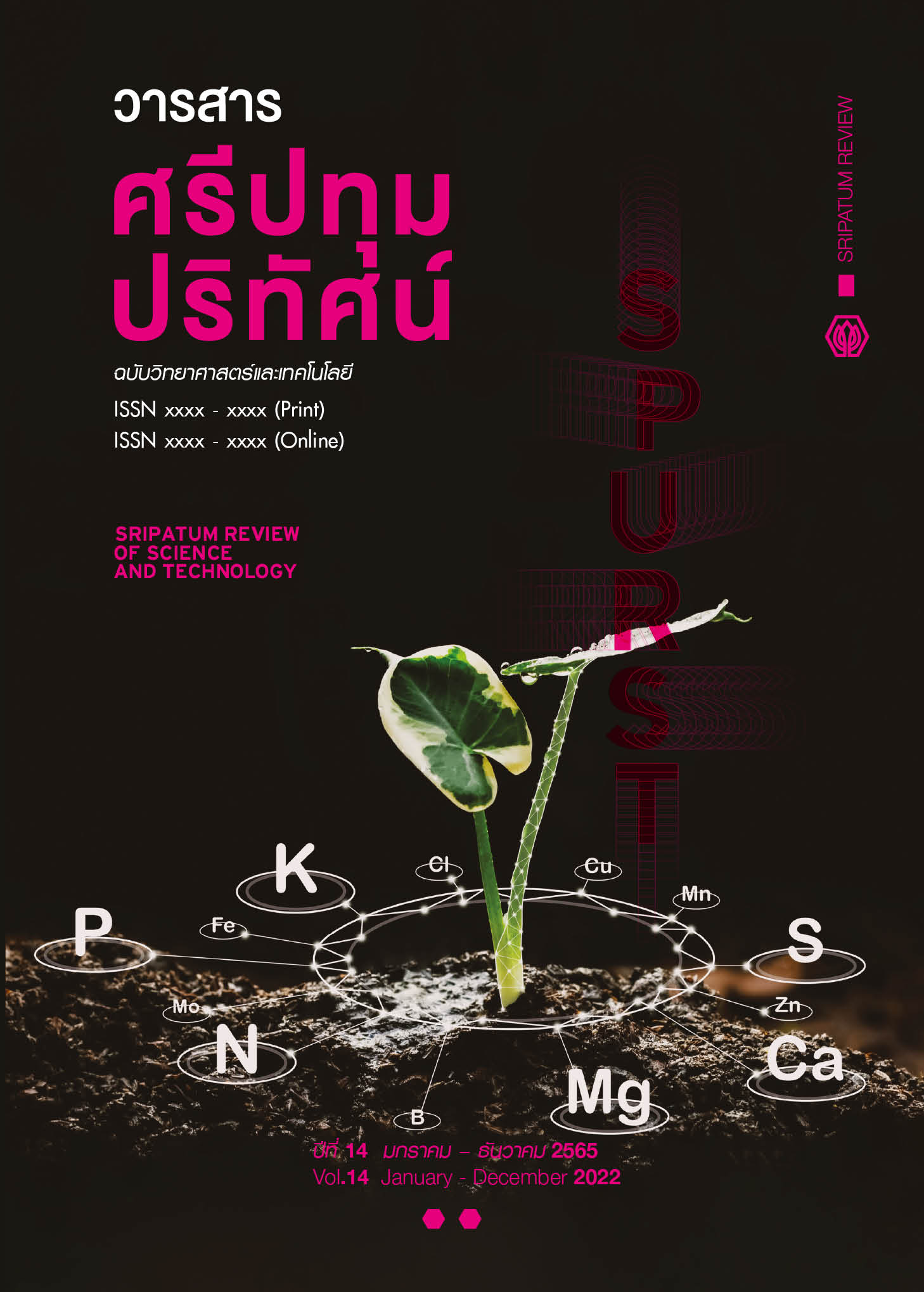Voice Assistant System for Construction Quantity Take-off
Main Article Content
Abstract
Quantity take-off is a critical step in determining construction costs, which is an important task in civil engineering. Although the quantity take-off is a repetitive procedure and each iteration has a simple task, quantity take-off is a time-consuming process. The application of artificial intelligence technology will help develop more efficient work systems. The objective of this research is to develop a voice assistant for construction quantity take-off with Python. The three main libraries were used: (1) Speech Recognition 3.8.1, (2) gTTS 2.2.2, and (3) playsound. 1.2.2. The voice input was developed in two types: (1) Information of the building member input one-by-one (2) Data entry by giving all information of the building member one time. The results showed that the program was able to receive the building member information from the sound of speech. Information of the building member input one-by-one gives higher accuracy but takes longer time. The input one-by-one method provides word error rate between 12.36 and 22.45, while all information of the building member one time method provides word error rate between 20.54 and 28.76. The developed program will make the work more comfortable and efficient.
Article Details
References
Ali, A., Zhang, Y., Cardinal, P., Dahak, N., Vogel, S. and Glass, J. (2014). A complete KALDI recipe for building Arabic speech recognition systems. The Proceedings of 2014 IEEE Spoken Language Technology Workshop (SLT), 7-10 December 2014 at South Lake Tahoe (USA), 525-529.
Anggraini, N., Kurniawan, A., Wardhani, L.K. and Hakiem, N. (2018). Speech Recognition Application for the Speech Impaired using the Android-based Google Cloud Speech API. TELKOMNIKA, 16(6), 2733-2739.
Chunhamaneewat ,S. and Tuntisewee, K. (2020) . A study of process to use 3D model (BIM) for design and take off quantities material of complementary wall. The Proceeding of the 25th National Convention on Civil Engineering, 15-17 July 2020 at Chonburi, 1-9. (in Thai)
Department of Special Investigation, Ministry of Justice. (2021) The Study of The Speech Recognition [Online]. Retrieved April 10, 2021, from http://www.dsi.go.th/Files/25620919/การศึกษาระบบรู้จำเสียงพูดอัตโนมัติ.pdf. (in Thai)
Filippidou, F. and Moussiades, L. (2020). A Benchmarking of IBM, Google and Wit Automatic Speech Recognition Systems. Artificial Intelligence Applications and Innovations, 583, 73–82.
Iancu, B. (2019). Evaluating Google Speech-to-Text API’s Performance for Romanian e-Learning. Informatica Economică, 23(1), 17-25.
Lee, A. and Kawahara, T. (2009). Recent development of open-source speech recognition engine julius. The Proceedings of Asia-Pacific Signal and Information Processing Association, 2009 Annual Summit and Conference (APSIPA ASC 2009), 5 October 2009 at Hokkaido University (Japan), 131–137.
Muangpool, T., Intharasomba, O. and Maneechot, A. (2015). Voice to Text Translation Application for Deafness using Google API. The proceedings of the National and International Conference, 3-4 December 2015 at Uttaradit Rajabhat University, 1-8. (in Thai)
Namahoot, S.J. (2014). Tourist Information Searching System by Speech. MUT Journal of Business Administration, 11(2), 1-20. (in Thai)
Olanrewaju, O.L., Sandanayake, M., and Babarinde, S.A. (2020). Voice Assisted Key-In Building Quantities Estimation System. Journal of Engineering Project and Production Management, 10(2), 114-122.
Plonkowski, M. and Urbanovich, P. (2014). Tuning a CMU Sphinx-III Speech Recognition System for Polish Language. Przegląd Elektrotechniczny, 90(4), 181-184.
Sharma, K., Prasad, T.V. and Prasad, S.V.A.V. (2013). Hindi speech enabled windows application using Microsoft SAPI. International journal of computer engineering & technology (IJCET), 4(2), 425-436.
Sukhamwang ,A., Nusen, S., Nusen, P., and Kaewmoracharoen, M. (2019). Guideline of Construction Quantity Takeoff on BIM-based Model According to Master Format Categories. KKU Research Journal (Graduate Studies), 19(2), 92-105. (in Thai)
Suriyamongkol, S.and Tuntisewee, K. (2020). Factors Influencing Adoption of Building Information Modeling in Government Sector : A Case Study of Construction Department, Ministry of Defense. The Proceeding of the 25th National Convention on Civil Engineering, 15-17 July 2020 at Chonburi, 1-9. (in Thai)
Thearmontree, S. (2020). PYTHON Programming Language guide. Nonthaburi: IDC Premier. (in Thai)
Tibodee, P., Sudsin, T. and Thodsakai, T. (2021). The Apply of Using Building Information Modeling (BIM) to Present Material Takeoff : Case Study Educational Building. Journal of Architecture Design and Construction, 3(1), 57-68. (in Thai)
Xu, B., Tao, C., Feng, Z., Raqui, Y. and Ranwez, S. (2021). A Benchmarking on Cloud based Speech-To-Text Services for French Speech and Background Noise Effect. The Proceedings of 6th National Conference on Practical Applications of Artificial Intelligence, 2021 at France, 1-6.


